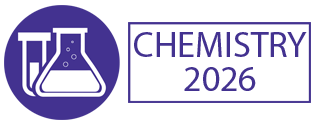High Performance Thin Layer Chromatography
High Performance Thin Layer Chromatography (HPTLC) is a modern and advanced version of thin layer chromatography (TLC), a widely used separation technique in analytical chemistry. HPTLC offers higher resolution, sensitivity, and reproducibility compared to traditional TLC, making it suitable for qualitative and quantitative analysis of complex mixtures. HPTLC operates by spotting a sample onto a thin layer of stationary phase coated on a glass or aluminum plate, followed by development in a solvent system. The separated components are visualized and quantified using various detection methods such as UV absorption, fluorescence, or derivatization. HPTLC is utilized in pharmaceuticals, food and beverage, cosmetics, forensic science, and environmental analysis for quality control, impurity profiling, and identification of compounds. It offers advantages such as rapid analysis, minimal sample preparation, and cost-effectiveness. HPTLC is highly versatile and can separate a wide range of compounds including small molecules, natural products, drugs, and polymers. Ongoing advancements in plate technology, automation, and software improve the efficiency and accuracy of HPTLC analysis. Collaboration between researchers, manufacturers, and regulatory agencies ensures the development and standardization of HPTLC methods for diverse applications in analytical chemistry.

Hossam A Gabbar
Ontario Tech University, Canada
Victor John Law
University College Dublin, Ireland
Alexander Bagaturyants
National Research Nuclear University MEPhI, Russian Federation
Sergey Suchkov
N.D. Zelinskii Institute for Organic Chemistry of the Russian Academy of Sciences, Russian Federation
Shree Niwas Chaturvedi
Centre for Aptitude Analysis and Talent Search, India
Pieter Samyn
SIRRIS, Belgium




Title : Advances in plasma-based radioactive waste treatment
Hossam A Gabbar, Ontario Tech University, Canada
Title : Unraveling the ultrastructure and functions of the neuronal membrane skeleton using super-resolution fluorescence microscopy
Zhou Ruobo, Djillali Liabes University of Sidi Bel Abbes, Algeria
Title : Solar box cooker dehydration, and relative humidity endpoint detection, of lamiaceae culinary leaves on the island of Crete
Victor John Law, University College Dublin, Ireland
Title : Nutrient and heavy metal loads from the Ribeiras to Coastal zones: A land-ocean continuum perspective in Madeira Island
Aracelis Del Carmen Narayan Rajnauth, University of Porto, Portugal
Title : Prospective polyoxometalate-based covalent organic framework heterogeneous catalysts
Arash Ebrahimi, Comenius University Bratislava, Slovenia
Title : Eliminating implant failure in humans with nano chemistry: 30,000 cases and counting
Thomas J Webster, Brown University, United States